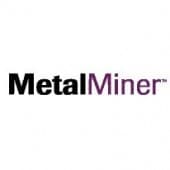Perhaps of more consequence than aluminum financing deals, as we mentioned in Part One, is the structural shift in the supply side that has taken place.
As the FT points out, where copper and iron ore have been driven by a surge in Chinese demand, aluminum has been driven by a surge in Chinese production. A surge that many expected would be short-lived due to China’s relatively high power costs, but in practice has continued to grow.
Production Numbers
In 2000 China produced 2.8 million tons; last year it produced 17.8 million tons with a capacity of well over 20 million tons. In the first eight months of this year, its output was 10.2% higher than in the same period a year earlier, according to the IAI figures in the FT; in the rest of the world, output was 2.1% lower.
Not only is China moving production westward in search of lower-cost electricity, but it is also moving up the technology ladder, according to the FT. Chinese smelters can now run electricity through their pots at 500,000 amps, while Rusal’s newest smelters manage only 300,000, lowering costs and increasing efficiency.
Price Stability
Encouragingly for aluminum consumers, new applications for the metal are being found everyday and the market continues to expand strongly while supply in the medium-to-longer term appears plentiful enough to ensure prices remain roughly around current levels, rather than having any prospect of returning to the $3000+ per ton highs of mid-2008.
Back to the producers, though -- with smelter profits under so much pressure at current prices, it is no surprise Rio Tinto Alcan is focusing more on alumina production and looking to sell its smelting business, while BHP Billiton boss Marius Kloppers says, “I don’t like aluminium,” and has no plans to invest any money in its aluminum business.
- English (UK)
- English (India)
- English (Canada)
- English (Australia)
- English (South Africa)
- English (Philippines)
- English (Nigeria)
- Deutsch
- Español (España)
- Español (México)
- Français
- Italiano
- Nederlands
- Português (Portugal)
- Polski
- Português (Brasil)
- Русский
- Türkçe
- العربية
- Ελληνικά
- Svenska
- Suomi
- עברית
- 日本語
- 한국어
- 简体中文
- 繁體中文
- Bahasa Indonesia
- Bahasa Melayu
- ไทย
- Tiếng Việt
- हिंदी
Guess Who's Driving Aluminum Production?
Published 10/10/2012, 11:17 AM
Updated 07/09/2023, 06:31 AM
Guess Who's Driving Aluminum Production?
Latest comments
Loading next article…
Install Our App
Risk Disclosure: Trading in financial instruments and/or cryptocurrencies involves high risks including the risk of losing some, or all, of your investment amount, and may not be suitable for all investors. Prices of cryptocurrencies are extremely volatile and may be affected by external factors such as financial, regulatory or political events. Trading on margin increases the financial risks.
Before deciding to trade in financial instrument or cryptocurrencies you should be fully informed of the risks and costs associated with trading the financial markets, carefully consider your investment objectives, level of experience, and risk appetite, and seek professional advice where needed.
Fusion Media would like to remind you that the data contained in this website is not necessarily real-time nor accurate. The data and prices on the website are not necessarily provided by any market or exchange, but may be provided by market makers, and so prices may not be accurate and may differ from the actual price at any given market, meaning prices are indicative and not appropriate for trading purposes. Fusion Media and any provider of the data contained in this website will not accept liability for any loss or damage as a result of your trading, or your reliance on the information contained within this website.
It is prohibited to use, store, reproduce, display, modify, transmit or distribute the data contained in this website without the explicit prior written permission of Fusion Media and/or the data provider. All intellectual property rights are reserved by the providers and/or the exchange providing the data contained in this website.
Fusion Media may be compensated by the advertisers that appear on the website, based on your interaction with the advertisements or advertisers.
Before deciding to trade in financial instrument or cryptocurrencies you should be fully informed of the risks and costs associated with trading the financial markets, carefully consider your investment objectives, level of experience, and risk appetite, and seek professional advice where needed.
Fusion Media would like to remind you that the data contained in this website is not necessarily real-time nor accurate. The data and prices on the website are not necessarily provided by any market or exchange, but may be provided by market makers, and so prices may not be accurate and may differ from the actual price at any given market, meaning prices are indicative and not appropriate for trading purposes. Fusion Media and any provider of the data contained in this website will not accept liability for any loss or damage as a result of your trading, or your reliance on the information contained within this website.
It is prohibited to use, store, reproduce, display, modify, transmit or distribute the data contained in this website without the explicit prior written permission of Fusion Media and/or the data provider. All intellectual property rights are reserved by the providers and/or the exchange providing the data contained in this website.
Fusion Media may be compensated by the advertisers that appear on the website, based on your interaction with the advertisements or advertisers.
© 2007-2025 - Fusion Media Limited. All Rights Reserved.
